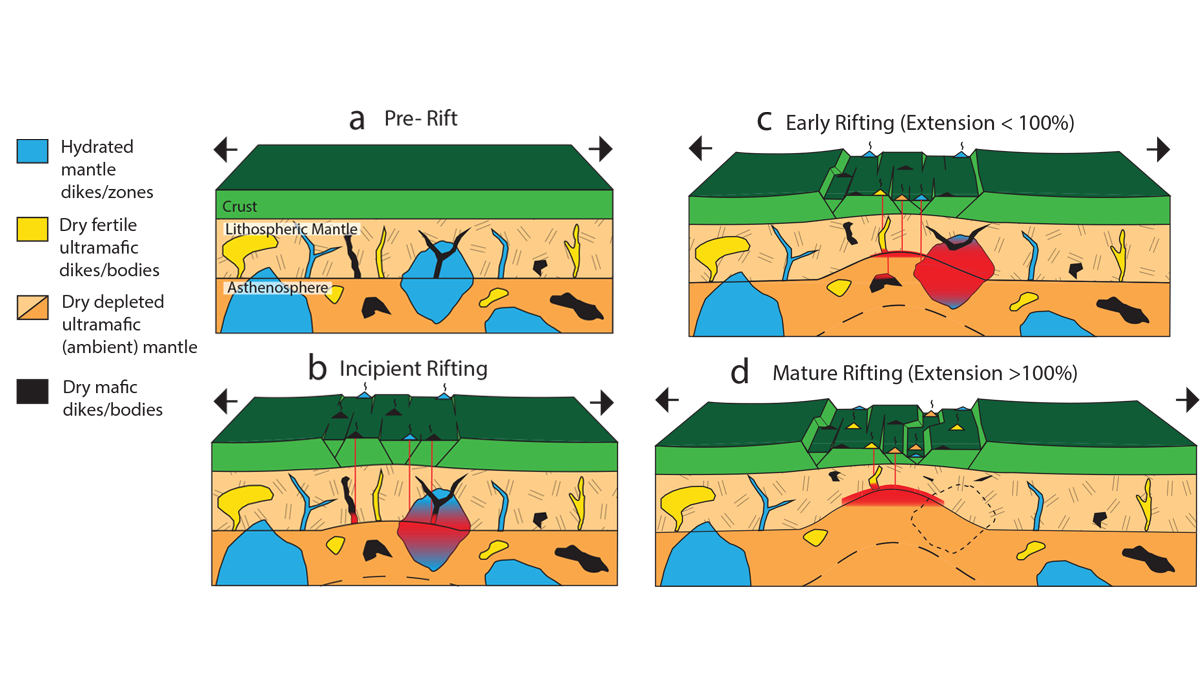Editors’ Highlights are summaries of recent papers by AGU’s journal editors.
Source: Journal of Geophysical Research: Solid Earth
Rifting is the result of the stretching of continents, a process that forms depressions of the Earth’s surface, filled with magma ascending from the melting mantle. The magma produced over million years shows large chemical differences, indicating the evolution of mantle melting conditions. These conditions are mostly defined by the decreasing pressure beneath a thinning lithosphere, however, this is not sufficient to explain the diversity of rift magmas.
Mayle and Harry [2023] provide a new assessment of the quantity and petrological characteristics, that is, the mineral assemblage, of the magmas produced during rifting, enabling a comparison with those now hosted in continents. Their elegant approach, a computational simulation of evolving temperature and pressure conditions, addresses a variety of mantle source rocks, from water-rich basalts to dry mantle, and compute characteristic magma evolutions. The authors compute relative orders and volumes of magmas closely matching those observed in rifts, showing how these can trace uniquely the deep source rocks. These results provide critical information on what rocks may have been present beneath rifting continents, before they drifted apart.
Citation: Mayle, M., & Harry, D. L. (2023). Syn-rift Magmatism and Sequential Melting of Fertile Lithologies in the Lithosphere and Asthenosphere. Journal of Geophysical Research: Solid Earth, 128, e2023JB027072. https://doi.org/10.1029/2023JB027072
—Fabio A. Capitanio, Associate Editor, JGR: Solid Earth

